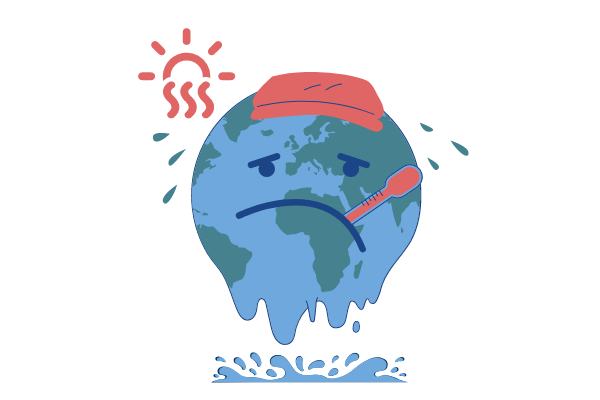What Is EMDR? The ‘Bizarre’ Therapy Helping Prince Harry Heal

Cassandra Rollins’ daughter was still conscious when the ambulance took her away.
Shalondra Rollins, 38, was struggling to breathe as COVID-19 overwhelmed her lungs. But before the doors closed, she asked for her cellphone, so she could call her family from the hospital.
It was April 7, 2020 — the last time Rollins would see her daughter or hear her voice.
The hospital rang an hour later to say she was gone. A chaplain later told Rollins that Shalondra had died on a gurney in the hallway. Rollins was left to break the news to Shalondra’s children, ages 13 and 15.
More than a year later, Rollins said, the grief is unrelenting.
Rollins has suffered panic attacks and depression that make it hard to get out of bed. She often startles when the phone rings, fearing that someone else is hurt or dead. If her other daughters don’t pick up when she calls, Rollins phones their neighbors to check on them.
The therapy has decades of clinical evidence to support that it can be remarkably successful for treating PTSD, which is often marked by terrifying flashbacks in which a person feels they are re-experiencing a previous trauma again and again. In one recent study, published late last year in The British Journal of Psychiatry, 67 per cent of the 145 people who suffered from trauma as a result of childhood physical and sexual abuse, and who completed six to eight weeks of EMDR therapy, no longer qualified for PTSD diagnoses. A year later, 80 per cent of participants lost their diagnoses.
Many believe the positive effects of the treatment are permanent. Lee, an associate professor at The University of Western Australia, attests to its “very long term” results. “Once you start moving how trauma is stored in the brain, humans have amazing capacity to do their own healing from there.”
But, therapists still don’t know exactly why the therapy is as successful as it is.
One theory, says Lee, is that the bilateral eye movements trick the mind into experiencing a state similar to the Rapid Eye Movement (REM) sleep state, the four hours of sleep people typically get at night during which many memories are processed and no longer remain front of mind and vivid.
But this is just a theory, which goes back to why the therapy, he says, “has been considered controversial for a while”.
“It was considered a bit sceptically [initially],” says Professor Caroline Hunt, president of the Australian Clinical Psychology Association, of EMDR, which was originally founded in the late 1980s by the late American psychologist and researcher Francine Shapiro. “The story is a bit bizarre.” In a nutshell: while Shapiro was walking one day and thinking of a traumatic event, she flicked her eyes backwards and forwards and realised she felt better about the event. She used the method on her patients and found success.
But now, say both Lee and Hunt, the therapy is “mainstream” both here and overseas. In Australia, it is endorsed by the National Health and Medical Research Council, and Open Arms, the Australian Government support network for current and ex-Australian Defence Force personnel and their families, among other agencies. The United States-based International Society For Traumatic Stress Studies recommends it too.
“It’s definitely becoming more popular,” says Lee, adding that it can also sometimes be used effectively to treat other conditions like depression that’s been triggered by a recent crisis, childhood neglect, and extensive bullying, though there is less published evidence of its effectiveness to treat conditions outside of PTSD. “My books are closed. And I struggle to find [other EMDR] therapists” – for patients seeking the treatment – “who don’t have extensive waiting lists, unfortunately.”
One reason: the treatment, unlike cognitive behavioural therapy, can be quick. For a person with a single adult-onset trauma, treatment can sometimes be completed in a few hours. For people with complex and multiple traumas it can take years.
But regardless of how long it takes, Brendan Maccione can attest that, like Belterman, the impact can be life-changing.
“It’s almost as though it gives me that ability to deal with anything,” says Maccione, a 43-year-old Perth police officer, of a psychological tool his EMDR therapy gave him which has enabled him to continue his work. Maccione was diagnosed with PTSD in 2017; this stemmed, partly, from traumatic scenes he witnessed at work while tending to fatalities at car crashes and other crime scenes. Now, all he has to do is imagine himself placing white gridiron pads – those worn by American football players – on his shoulders before going to work. It is a form of “imagery rescripting”, which gives a person who has suffered trauma a new association to previous traumatic events. It immediately makes him feel calm. “The gridiron pads have become, I guess, my safety blanket, for want of a better word,” says Maccione, president of Sirens of Silence, a support group for emergency services personnel. “Now, if I go to a crash, or if I’m feeling anxious on the way to a job, I can simply close my eyes.”
It’s a long way from where he was: experiencing terrible flashbacks every time he showered or smelled paint. Furthermore, EMDR helped him to heal from unresolved traumas from his childhood.
“I tried all other types of therapies, sitting on the couch just talking about the way we feel, that’s all great, we all like to do that,” says Maccione, who no longer qualifies for a PTSD diagnosis. “But [until] I branched out [to EMDR], I realised I wasn’t actually treating the root cause.”

Best Yoga Course To Become a Yoga Teachers
- Today when someone is looking for the best online yoga session or course, we can see many options to choose from.

The Urgency of Addressing Global Warming: A Call to Action
- Global warming, caused by human activities, is a pressing issue leading to rising temperatures, environmental damage, and socioeconomic impacts.

How To Improve Digestion By Practicing Yoga Asanas
- The workout and gym-going culture is a product of the 21st century, but Yoga has been in existence from the time of saints and gurus.

China’s Tianjin orders more testing of 14 million residents
- The northern Chinese city of Tianjin ordered a second round of COVID-19 testing of all 14 million residents Wednesday following the discovery of 97 cases